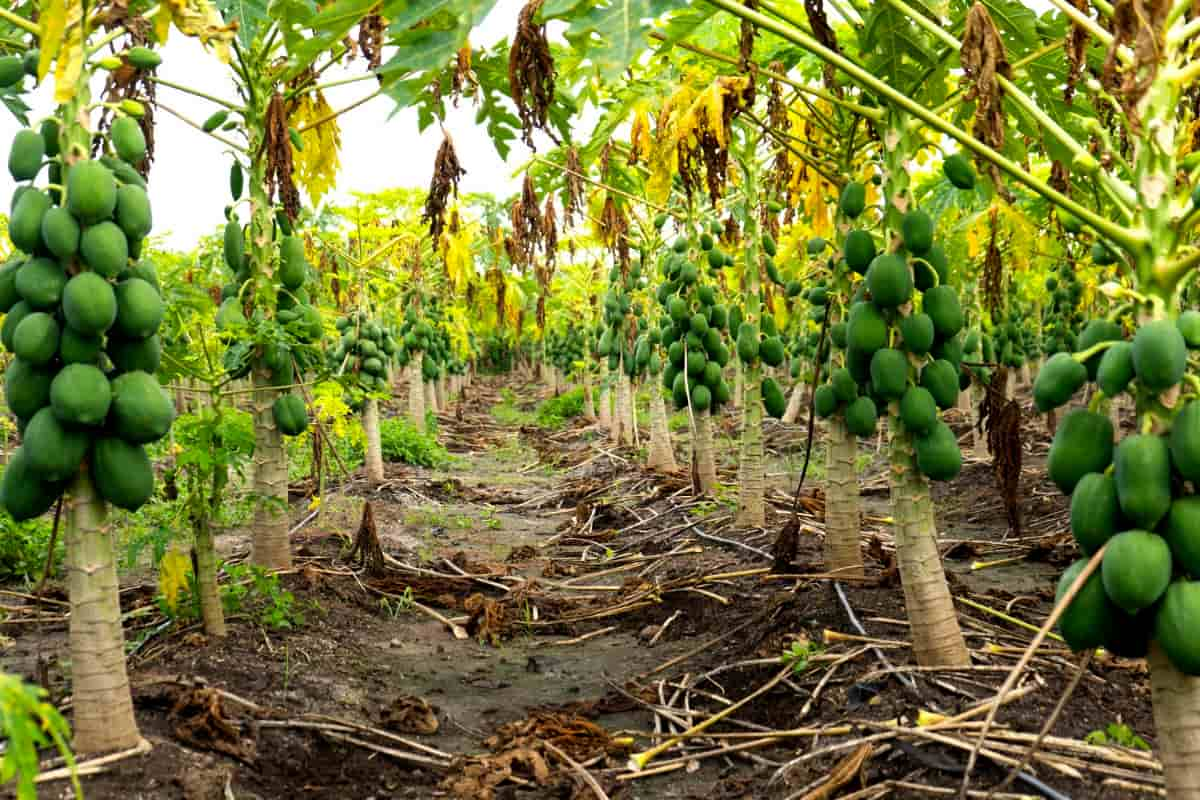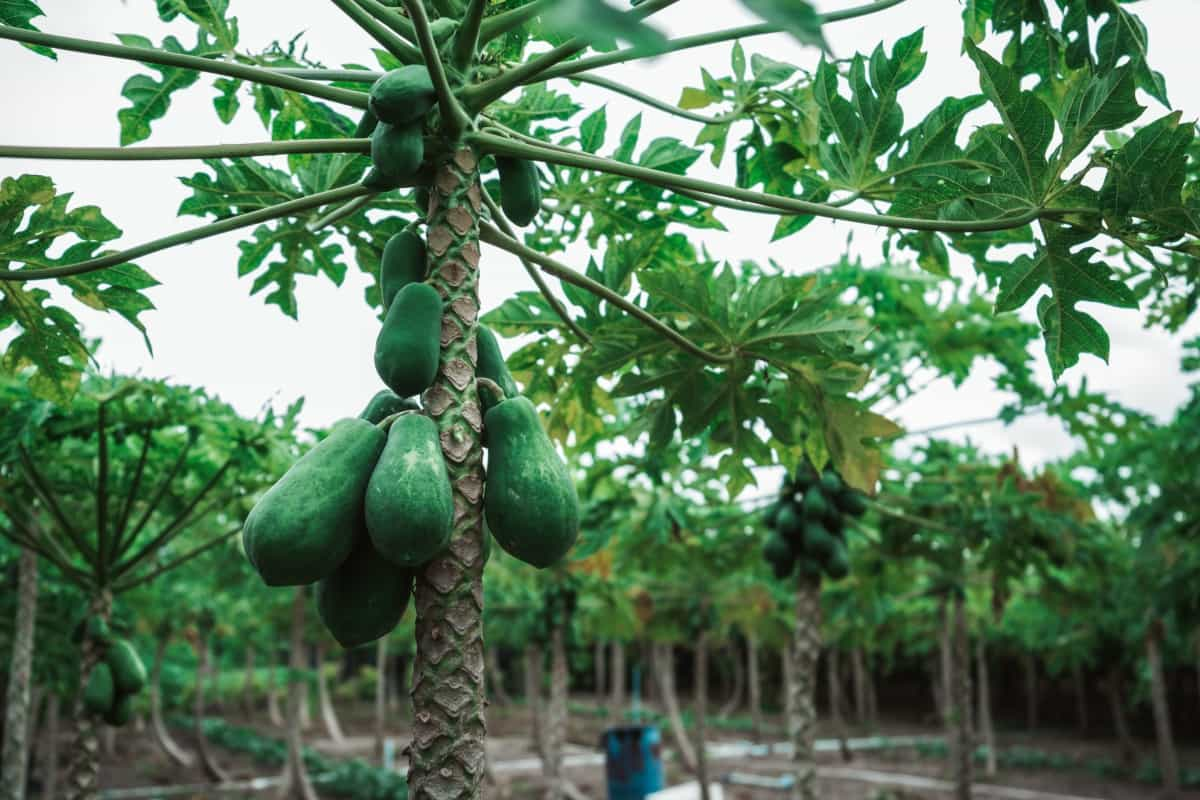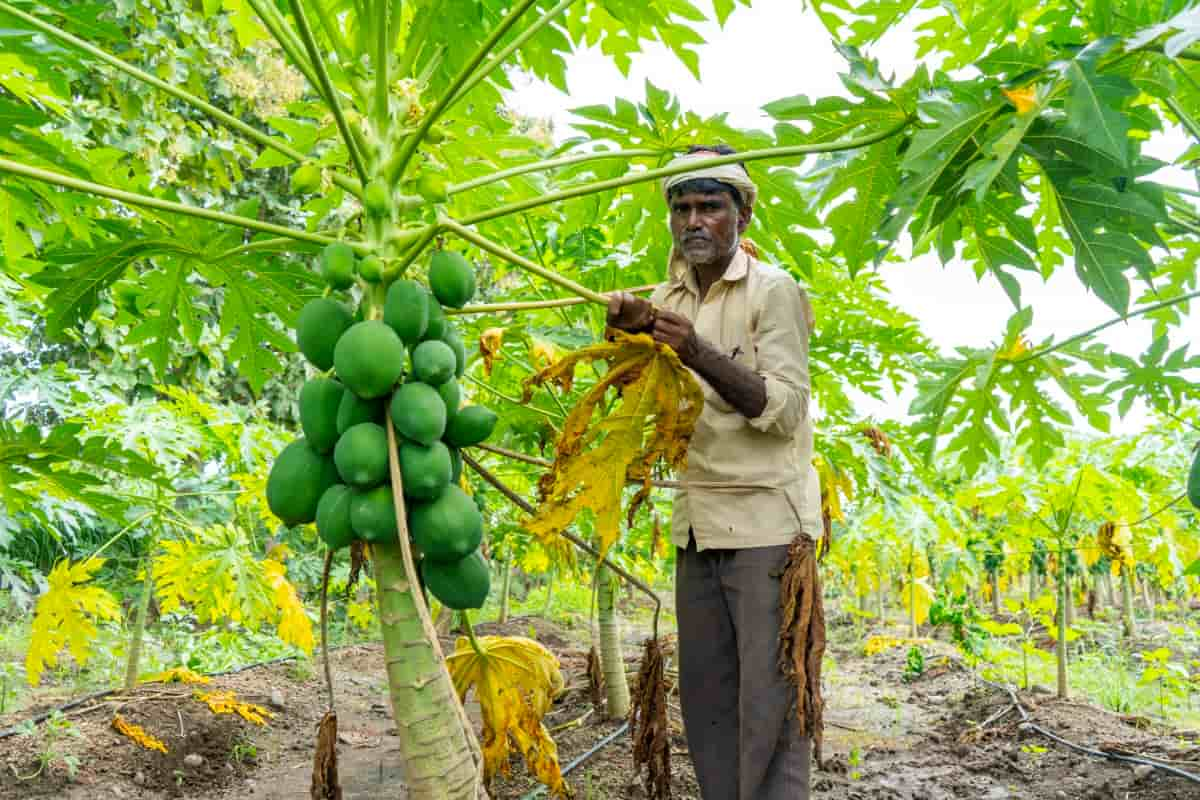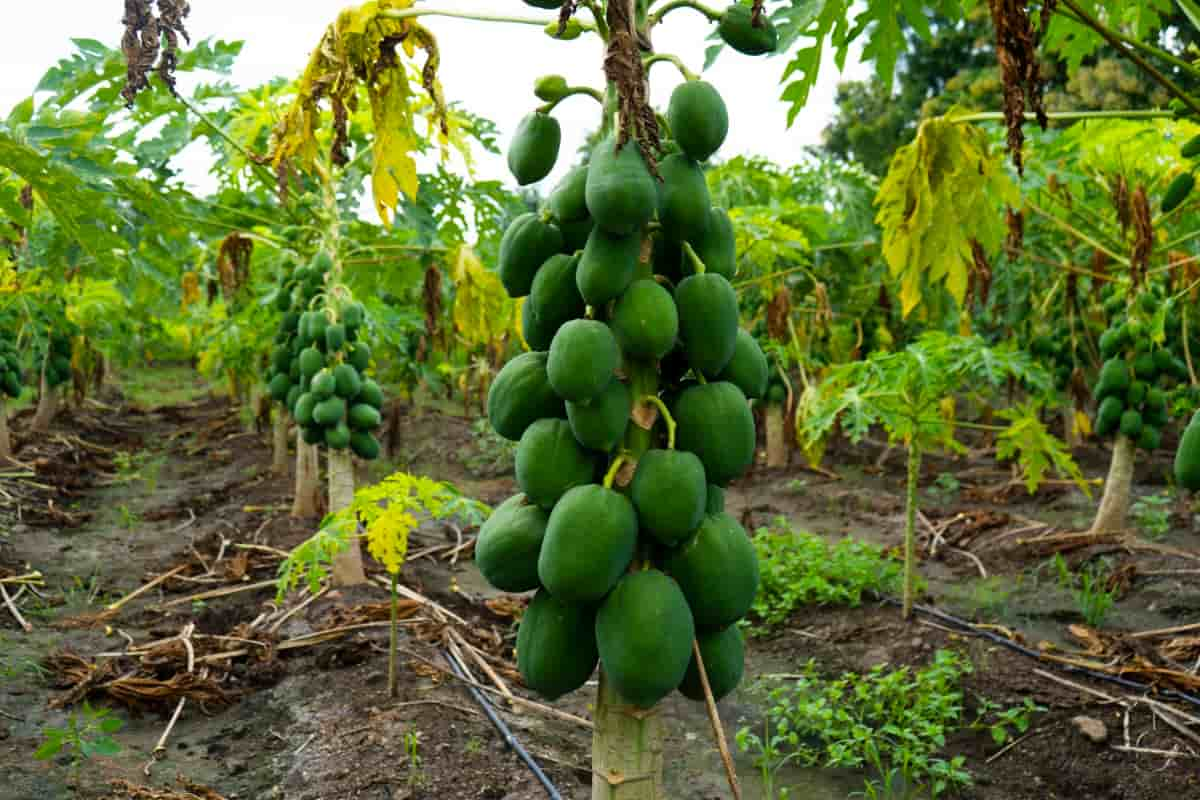Effective management of Papaya Ringspot Virus (PRSV) is crucial for sustaining papaya crops. Understanding symptoms, disease cycles, and treatment options, including resistant varieties, crop rotation, and biotechnological solutions, is vital. This comprehensive approach addresses the agricultural impact of ring spots, ensuring resilient papaya cultivation.

Papaya Ringspot Management
Introduction to Papaya Ringspot Management
Papaya ringspot, a viral disease caused by a potyvirus in the family Potyviridae, affects papaya plants, causing yellow or green ring spots, mosaic patterns, leaf distortion, and fruit deformities. It severely reduces yield and marketability, potentially leading to plant death. Symptoms include ringspots, bumps, deformities, and reduced fruit size and quality.
Overview of Management Challenges
The virus, affecting papaya and various plants like cucurbits and solanaceous crops, is transmitted by aphids. These insects swiftly transmit the virus from infected to healthy plants, covering long distances. The virus persists in plant debris and seeds for months, posing a continuous threat, while its rapid mutation challenges the development of resistant papaya varieties.
Importance of Effective Control Strategies
- lessens the disease’s incidence and severity in papaya crops
- Improve the yield and quality of papaya fruits
- Enhance the competitiveness and sustainability of papaya growers
- Protect the biodiversity and environment from the negative effects of the disease
- Prevents the spread of the disease to new plants and countries
Understanding the Disease
To control papaya ringspot disease effectively, it is important to understand its causal agent and disease cycle. This will help to identify the critical points for intervention and prevention.
Causal Agent and Disease Cycle
Papaya ringspot disease is caused by the potyvirus PRSV, with two types: PRSV-P infects papaya, while PRSV-W affects cucurbits. The disease cycle involves aphid-mediated stages: infection, replication in the cell nucleus, movement via plasmodesmata, and transmission as aphids acquire the virus during feeding, facilitating cross-infection between hosts.
Symptoms and Diagnosis in Papaya
Papaya ringspot disease symptoms, influenced by PRSV type, plant age, and environment, include yellow/green ringspots, mosaic patterns, leaf distortion, stunting, wilting, ringspots, bumps, and reduced fruit quality. Diagnosis involves observing symptoms, employing laboratory tests (ELISA, PCR), or using field-friendly diagnostic kits with specific antibodies or probes. These tools rapidly detect the virus’s presence in plant samples, aiding in early identification and management.
Transmission and Spread
The transmission and spread of papaya ringspot disease depend on several factors, such as the host range, the vector, the seed, and the plant debris.
Role of Vectors in Disease Spread: The role of vectors in disease spread is crucial for papaya ringspot disease, as aphids are the main mode of transmission of PRSV. Aphids can spread the virus within a field, between fields, or across regions. Therefore, controlling aphids is essential for preventing and managing papaya ringspot disease.
Impact of Environmental Conditions
Temperature influences virus activity and aphid behavior, with high temperatures promoting both. Low humidity (<60%) aids aphid-mediated virus transmission, while high humidity (>80%) hinders it. Wind disperses aphids, facilitating virus spread and causing plant damage. Rainfall washes off aphids, lowering transmission risk and may dilute or degrade the virus. Sunlight deactivates the virus and impacts plant growth and disease resistance.
Cultural Control Measures
Cultural control measures are practices that modify the environment or crop management to reduce the risk or severity of papaya ringspot disease.
Sanitation and Field Hygiene Practices
Preventing PRSV involves strict sanitation: promptly removing and destroying infected plants and burning or burying them deeply. Disinfect pruning tools with bleach or alcohol before and after use to prevent mechanical transmission. Regularly clear plant debris from fields, eliminating potential virus sources. Implement quarantine measures to restrict the spread of infected plants or fruits across regions or countries.
Crop Rotation and Interplanting Strategies
To mitigate PRSV impact, farmers can adopt crop rotation, alternating papaya with non-host crops like corn, rice, cassava, sweet potato, and pineapple. Interplanting papaya with non-host crops such as marigold, sunflower, garlic, onion, and chili creates a barrier against aphids and virus vectors, promoting biodiversity and additional income for farmers.
Chemical Control Options
Chemical control for aphids transmitting PRSV involves pesticides such as foliar sprays or soil drenches. Drawbacks include cost, toxicity to humans and animals, harm to beneficial insects, and aphid resistance. Use cautiously in integrated pest management.
Suitable Pesticides and Application Timing
Neem oil, a botanical pesticide, offers diverse actions like repellency against aphids. Apply at 0.5-1% every 7-10 days in papaya’s vegetative stage. Pyrethroids (0.01-0.05%) and organophosphates (0.05-0.1%) target aphids during flowering and vegetative stages, respectively. Carbamates (0.05-0.1%) provide reversible paralysis.
Integrated Pest Management Approaches
Integrated Pest Management (IPM) combines eco-friendly approaches to control pests in papaya plants. It includes monitoring for early detection, identifying aphid species, informed decision-making, and implementing interventions like cultural, physical, biological, or chemical methods.
In case you missed it: How to Manage Pest and Diseases in Papaya: Symptoms, Treatment, Control, and Prevention

Biological Control Methods
Utilizing biological agents and natural predators to lower aphid numbers and stop PRSV transmission is known as a biological control strategy. Natural predators are organisms that feed on aphids, such as ladybugs, lacewings, hoverflies, parasitic wasps, and spiders. Biological agents are organisms that infect or parasitize aphids, such as fungi, bacteria, viruses, nematodes, and protozoa.
Natural Predators and Biological Agents
Introduce or conserve natural predators in papaya fields for aphid control: Introduction releases external predators, while conservation enhances existing populations by providing shelter, water, alternative food, and minimizing disturbance. Biological agents, sourced commercially or augmented from infected debris, corpses, soil, hosts, or vectors, can be applied to combat aphids.
Enhancing Ecosystem Balance
Managing papaya ringspot involves balancing the ecological impacts of treatments like transgenic varieties, insecticides, and crop rotation. Consideration of diversity, interactions, and natural resource quality is crucial. Aligning with farmer and policymaker values, weighing costs and benefits helps in achieving a holistic and sustainable approach, reducing negative impacts on papaya production and enhancing agroecosystem resilience.
Use of Resistant Varieties
Effective management of papaya ringspot involves using resistant varieties, which can reduce reliance on chemicals. Resistance can be achieved through conventional breeding or genetic engineering. While conventional breeding is challenging for papaya, genetic engineering has successfully produced transgenic papaya with a coat protein gene, providing resistance to PRSV-P. However, challenges exist, especially in regions like Asia and Africa, due to regulatory and social issues.
Development of Resistant Strains
Two methods for developing resistant strains are mutagenesis and gene editing. For instance, SunUp, a mutant papaya, was created through gamma-ray exposure, harboring a mutation in the eIF4E gene, providing resistance to PRSV-P. Gene editing produced 18-40-1, CRISPR-Cas9-modified papaya with improved resistance by knocking out CsNPR1 without foreign DNA insertion.
Implementation and Adoption Challenges
Challenges in managing papaya ringspot include low awareness, limited access to resistant varieties, inadequate infrastructure, and policy gaps. To address this, collaboration among stakeholders is crucial. Farmers, consumers, researchers, policymakers, and industry players should work together to enhance awareness, improve access to resistant varieties, establish testing facilities, formulate supportive policies, create incentives, and respect cultural preferences for effective papaya ringspot management and adoption of resistant technologies.
Advanced Biotechnological Solutions
Advanced biotechnological solutions, such as nanotechnology (1-100 nm), offer precise, efficient methods for managing papaya ringspot. Nanoparticles with unique properties can deliver antiviral agents or genes, enhancing resistance in papaya varieties. This approach provides valuable insights into disease mechanisms and host-pathogen interactions, contributing to more effective and versatile solutions.
Genetic Engineering for Disease Resistance
Genetic engineering combats the papaya ringspot virus (PRSV) by introducing a virus gene into papaya plants, activating RNA silencing to thwart virus replication. The successful application includes transgenic varieties like Rainbow and SunUp, providing effective resistance. This technique safeguards papaya production globally by creating virus-resistant plants through pathogen-derived resistance.
Current Research and Future Prospects
Papaya ring spot, a viral disease transmitted by aphids, hampers papaya yield. Research emphasizes creating resistant papaya varieties, employing biological control agents, and adopting cultural practices. Future efforts target enhancing genetic diversity, refining diagnostics, and integrating diverse management strategies for more effective control in papaya orchards.
In case you missed it: How to Control Orange Pests Naturally: How to Get Rid of Them with Natural and Organic Treatment

Economic Impact
Papaya ring spot is a viral disease affecting papaya and cucurbits, caused by the papaya ring spot virus (PRSV) transmitted by aphids. It induces mosaic patterns on leaves, wet-oily streaks on stems/fruits, and distorts young growth. Widespread in tropical regions, it impacts yield and quality, notably in Hawaii, where resistant transgenic papaya varieties have been developed, mitigating economic losses for growers and related industries.
Effects on Papaya Yield and Quality
Papaya ring spot virus (PRSV) severely impacts global papaya production, causing mosaic and chlorotic symptoms, water-soaked streaks, and distorted fruits. Infection at early stages hampers fruit production, while delayed infection results in reduced yields and altered fruit quality. CP 50 cultivar exhibits better PRSV resistance, with integrated nutrient management enhancing papaya yield and quality under infection conditions.
Consequences for Farmers and Exporters
Papaya Ringspot virus (PRSV) is a global menace, devastating papaya and cucurbit crops. Symptoms include mosaic, chlorosis, distortion, ringspots, bumps, and necrosis on leaves, stems, and fruits, drastically reducing yield and quality. Spread by aphids in a non-persistent manner, PRSV is challenging to control with conventional methods like roguing or insecticides. This poses a significant threat to farmers and exporters relying on papaya and cucurbit production for income and food security.
In case you missed it: How to Control Apple Pests: How to Get Rid of Them with Natural and Organic Treatment

Conclusion
Implementing a holistic strategy for Papaya Ringspot Virus management is imperative. By integrating resistant varieties, crop rotation, and biotechnological measures, we can mitigate the impact on papaya crops. This approach not only safeguards yield but also ensures the long-term sustainability and profitability of papaya farming, emphasizing the importance of quarantine measures in preventing further spread.
- Beneficial Insects in Pest Management
- Natural Solutions for Pest Control in Flower Gardens
- Types of Fungicides Used in Agriculture
- Common Issues in the Fruit Development Stage of Pomegranate Farming
- Fruit Development Issues in Papaya: Easy Solutions and Treatment
- Soil-Borne Diseases and How to Protect Your Plants
- Practices to Prevent Disease Spread in the Garden
- From Wilted to Thriving: How to Treat Root Rot Naturally in Houseplants
- Natural Remedies to Cure Brown Spots on Fig Tree Leaves